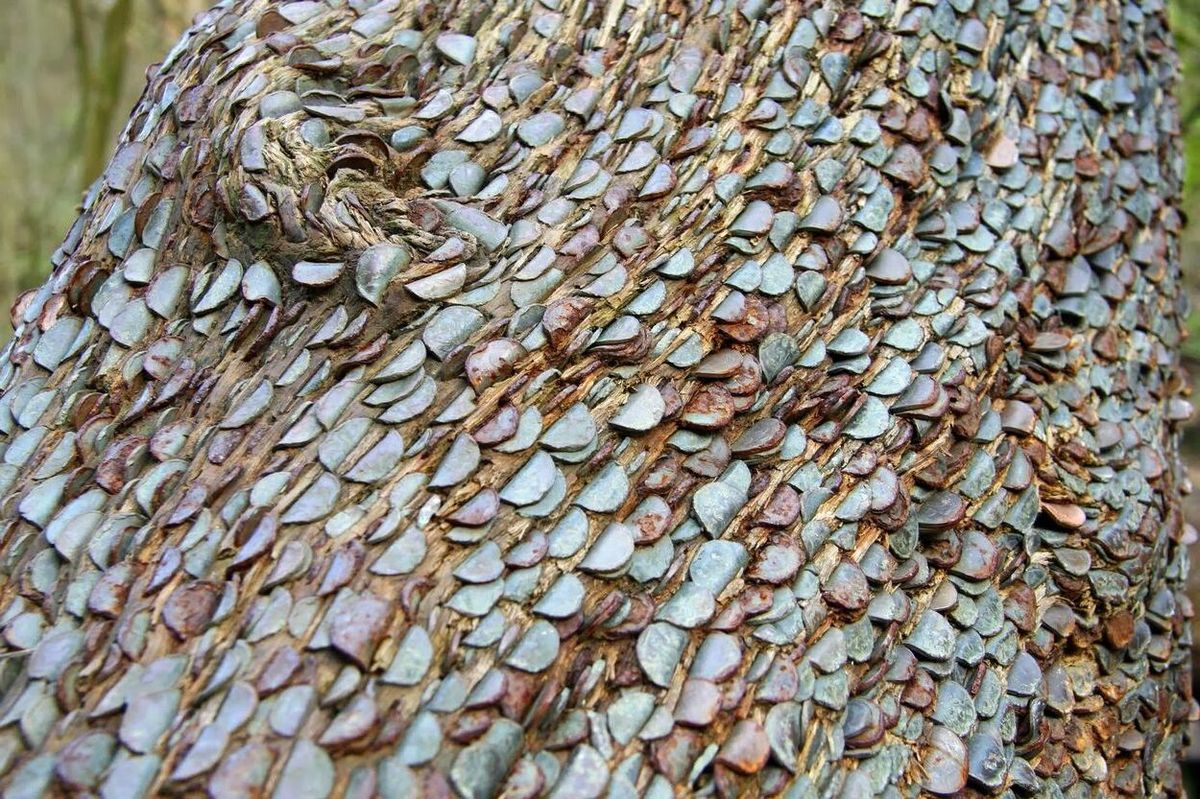
Ever wondered about the magical tradition of wishing trees in Great Britain? These enchanting trees, often found in ancient forests or near historic sites, hold a special place in British folklore. People visit them to tie ribbons, leave coins, or hang notes with their deepest wishes. But what makes these trees so special? They are believed to possess mystical powers, granting the wishes of those who honor them. From the famous clootie wells in Scotland to the mystical oak trees in England, each wishing tree has its own unique story. Ready to dive into the fascinating world of Great Britain's wishing trees? Let's uncover 35 intriguing facts about these magical trees and their rich history.
Key Takeaways:
- Wishing trees in Great Britain have been part of ancient traditions, offering hope and healing. They are linked to legends, but it's important to protect them for future generations.
- Visiting a wishing tree can be a communal and comforting experience, but it's crucial to use eco-friendly materials and preserve the environment. These trees hold cultural significance and should be respected.
What Are Wishing Trees?
Wishing trees are a fascinating part of folklore in Great Britain. People visit these trees to make wishes, often by tying ribbons or other tokens to the branches. Let's dive into some intriguing facts about these magical trees.
-
Ancient Tradition: Wishing trees have been part of British culture for centuries. They are often linked to ancient Celtic traditions.
-
Types of Trees: Oak, ash, and hawthorn trees are the most common types used as wishing trees.
-
Ribbons and Tokens: People tie ribbons, cloth, or even coins to the branches as a way to make their wishes.
-
Healing Powers: Some believe that these trees have healing powers, especially if the tokens are tied with a specific intention.
-
Sacred Sites: Many wishing trees are located near sacred sites like wells or ancient monuments.
Famous Wishing Trees in Great Britain
Several wishing trees have gained fame for their history and the number of visitors they attract. Here are some of the most notable ones.
-
The Wishing Tree of Isle Maree: Located in Scotland, this tree is famous for its association with ancient rituals.
-
The Knaresborough Wishing Tree: Found in North Yorkshire, this tree is a popular spot for tourists and locals alike.
-
The Wishing Tree of Madron: Situated in Cornwall, this tree is near a sacred well and is often visited for its supposed healing properties.
-
The Cloutie Tree: Another Scottish wishing tree, this one is located near Munlochy and is adorned with strips of cloth.
-
The Wishing Tree of St. Nectan's Glen: Found in Cornwall, this tree is part of a mystical woodland area.
Rituals and Customs
Different regions have unique rituals and customs associated with wishing trees. These practices add to the mystique and allure of these trees.
-
Coin-Embedded Trees: In some areas, people hammer coins into the bark as a way to make a wish.
-
Cloutie Wells: Near some wishing trees, you'll find wells where people dip cloth strips before tying them to the branches.
-
Seasonal Visits: Many people visit wishing trees during specific times of the year, such as Beltane or Samhain.
-
Personal Items: Some individuals leave personal items like jewelry or photographs as part of their wish-making ritual.
-
Prayers and Chants: It's common to say a prayer or chant while tying a token to the tree.
The Science Behind Wishing Trees
While the mystical aspects are captivating, there's also some science behind why people are drawn to wishing trees.
-
Psychological Comfort: Making a wish can provide psychological comfort and a sense of hope.
-
Community Bonding: Visiting a wishing tree can be a communal activity, strengthening social bonds.
-
Placebo Effect: Believing in the tree's powers can sometimes lead to real changes, thanks to the placebo effect.
-
Environmental Awareness: These trees often raise awareness about the importance of preserving natural sites.
-
Stress Relief: The act of making a wish can be a form of stress relief, similar to meditation.
Modern-Day Wishing Trees
In today's world, wishing trees continue to evolve, adapting to modern customs and technologies.
-
Digital Wishing Trees: Some places have digital versions where people can make wishes online.
-
Eco-Friendly Tokens: Modern visitors often use biodegradable materials to avoid harming the trees.
-
Tourist Attractions: Many wishing trees have become popular tourist spots, boosting local economies.
-
Social Media Influence: Photos of wishing trees often go viral, attracting even more visitors.
-
Cultural Festivals: Some regions hold festivals centered around their wishing trees, celebrating local traditions.
Legends and Myths
Wishing trees are steeped in legends and myths, adding to their allure and mystery.
-
Fairy Trees: Some believe that fairies inhabit these trees, granting wishes to those who honor them.
-
Cursed Trees: There are tales of cursed wishing trees that bring bad luck if disrespected.
-
Guardian Spirits: Many stories speak of guardian spirits that protect the trees and the wishes tied to them.
-
Historical Figures: Legends often link wishing trees to historical figures who supposedly made wishes there.
-
Miraculous Events: Some trees are famous for miraculous events that occurred after wishes were made.
Environmental Impact
While wishing trees are magical, it's essential to consider their environmental impact.
-
Tree Damage: Excessive tying of tokens can harm the tree's bark and overall health.
-
Littering: Non-biodegradable materials can become litter, affecting the surrounding environment.
-
Conservation Efforts: Many communities are now taking steps to protect these trees while allowing the tradition to continue.
-
Educational Programs: Schools and organizations often run programs to educate people about the importance of preserving wishing trees.
-
Sustainable Practices: Encouraging the use of eco-friendly materials helps ensure that wishing trees remain a part of British culture for generations to come.
The Magic of Wishing Trees
Wishing trees in Great Britain hold a special place in the hearts of many. These trees, adorned with coins, ribbons, and other tokens, symbolize hope, dreams, and a connection to the past. Each tree tells a unique story, reflecting the wishes and aspirations of countless individuals over the years.
Visiting a wishing tree can be a profound experience. It’s a reminder of the shared human desire for good fortune and happiness. Whether you're making a wish or simply admiring the beauty of these trees, they offer a moment of reflection and wonder.
Next time you come across a wishing tree, take a moment to appreciate its history and the collective hopes it represents. Who knows? Maybe your wish will join the countless others, adding to the magic and mystery of these enchanting trees.
Frequently Asked Questions
Was this page helpful?
Our commitment to delivering trustworthy and engaging content is at the heart of what we do. Each fact on our site is contributed by real users like you, bringing a wealth of diverse insights and information. To ensure the highest standards of accuracy and reliability, our dedicated editors meticulously review each submission. This process guarantees that the facts we share are not only fascinating but also credible. Trust in our commitment to quality and authenticity as you explore and learn with us.


